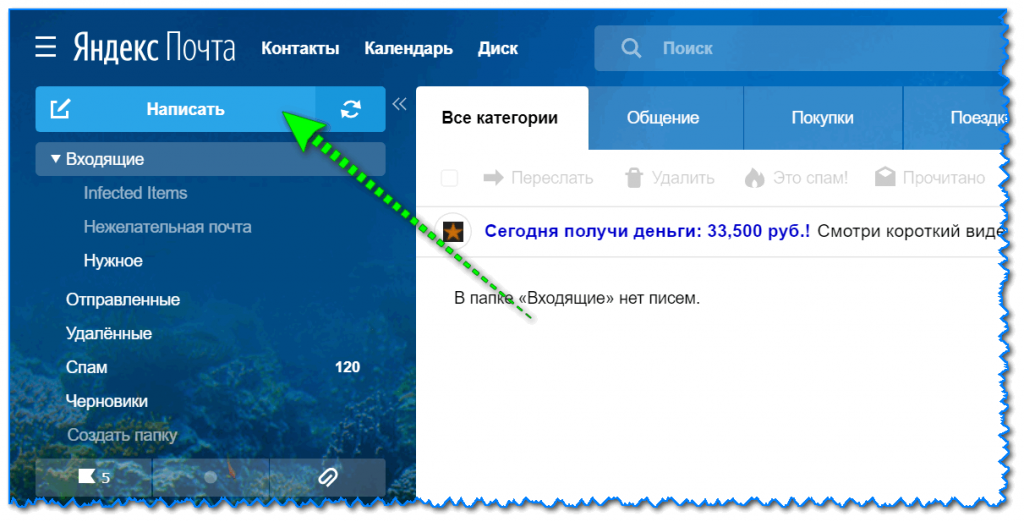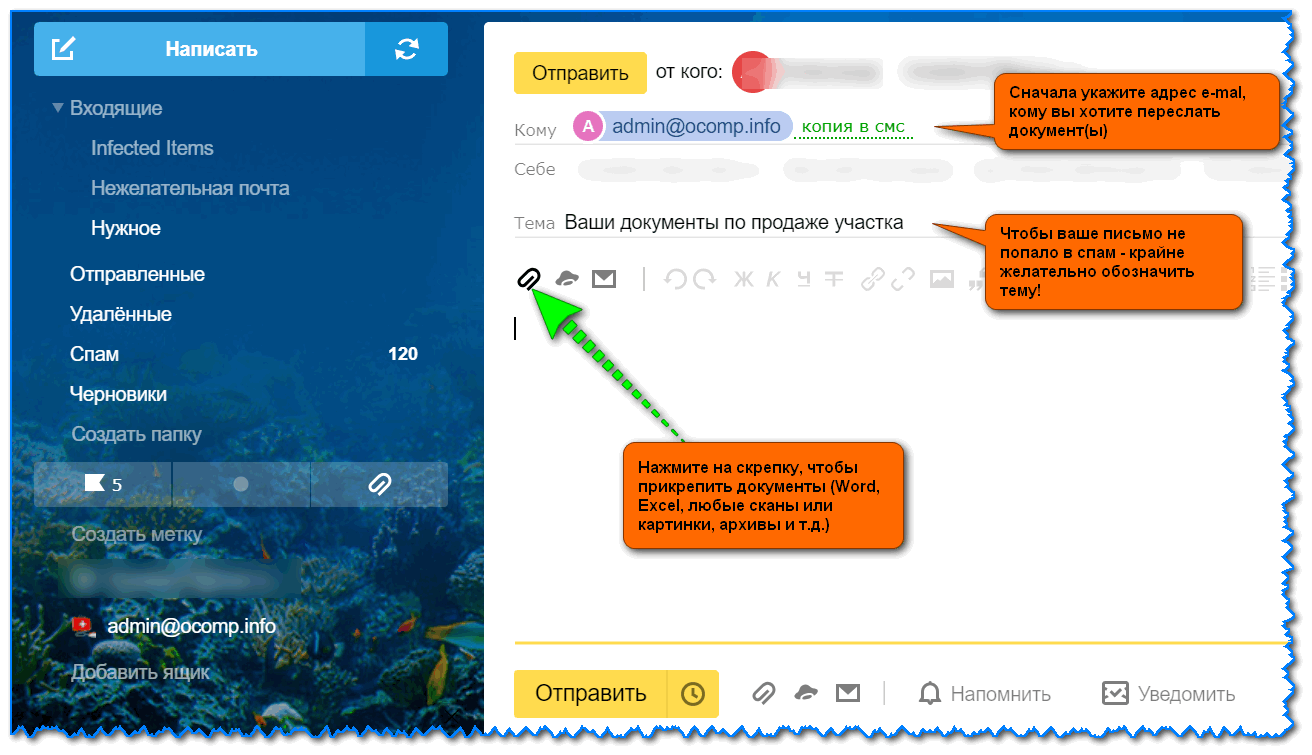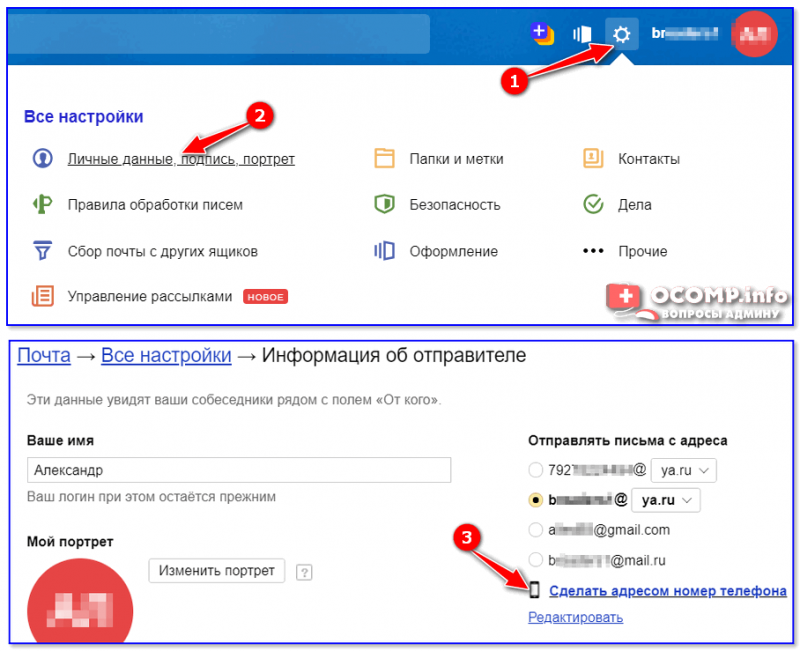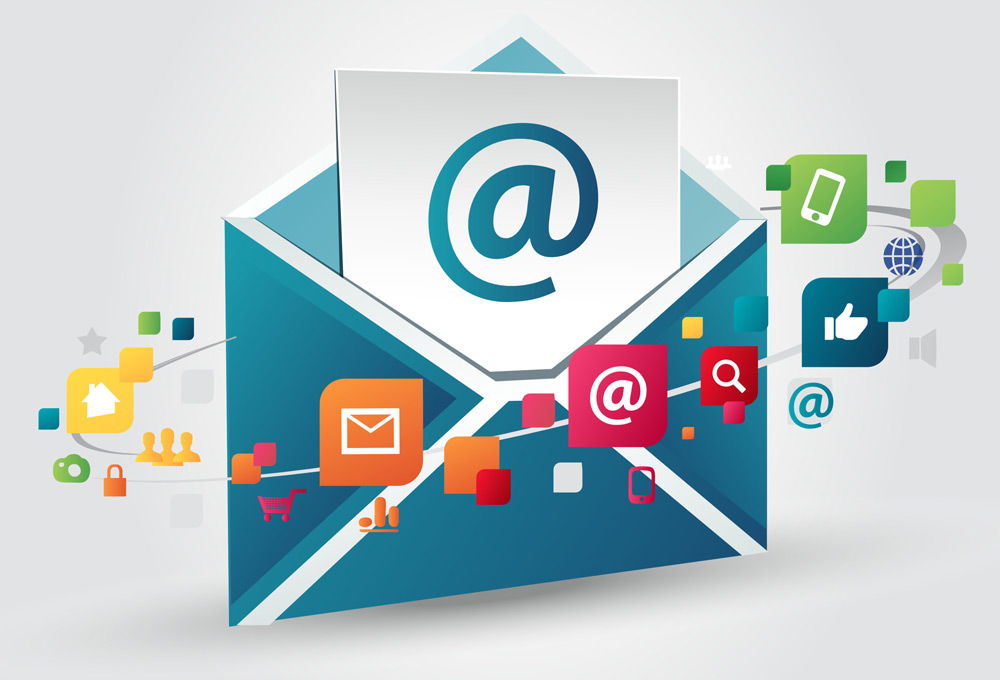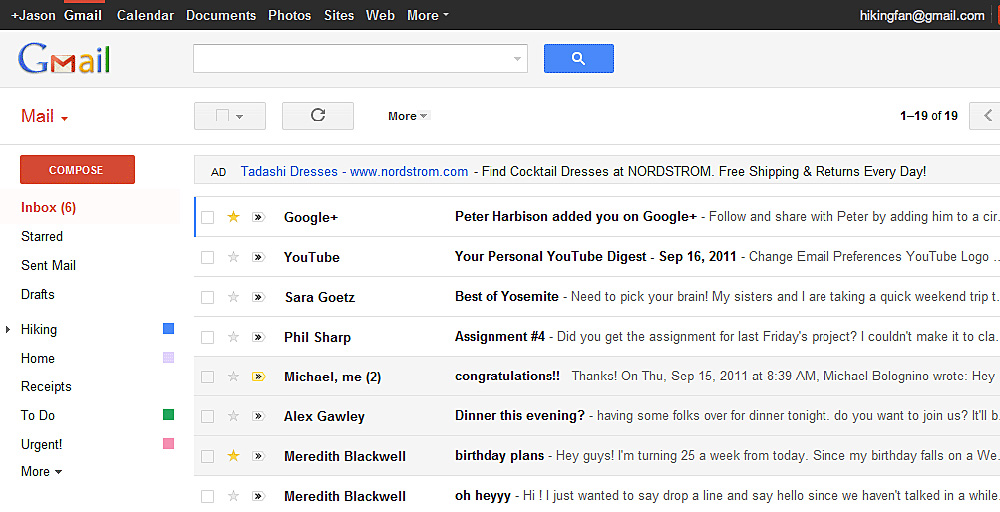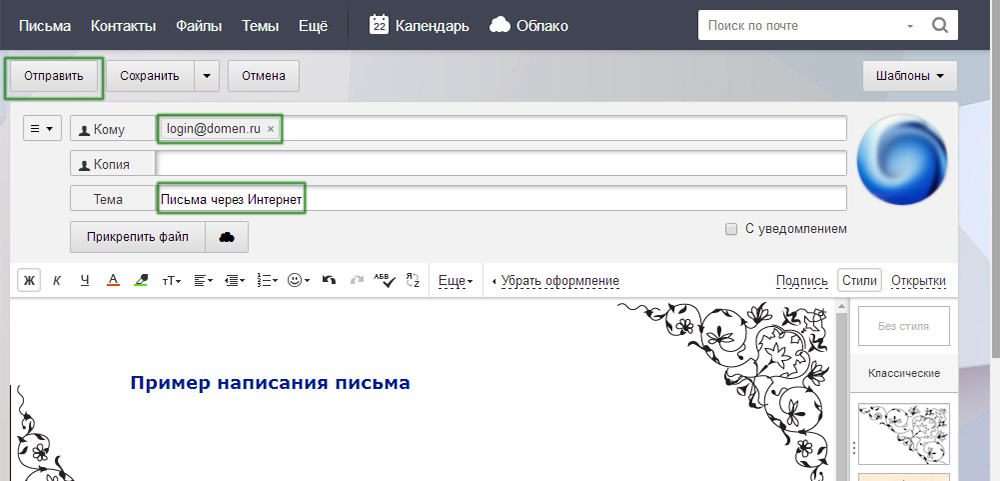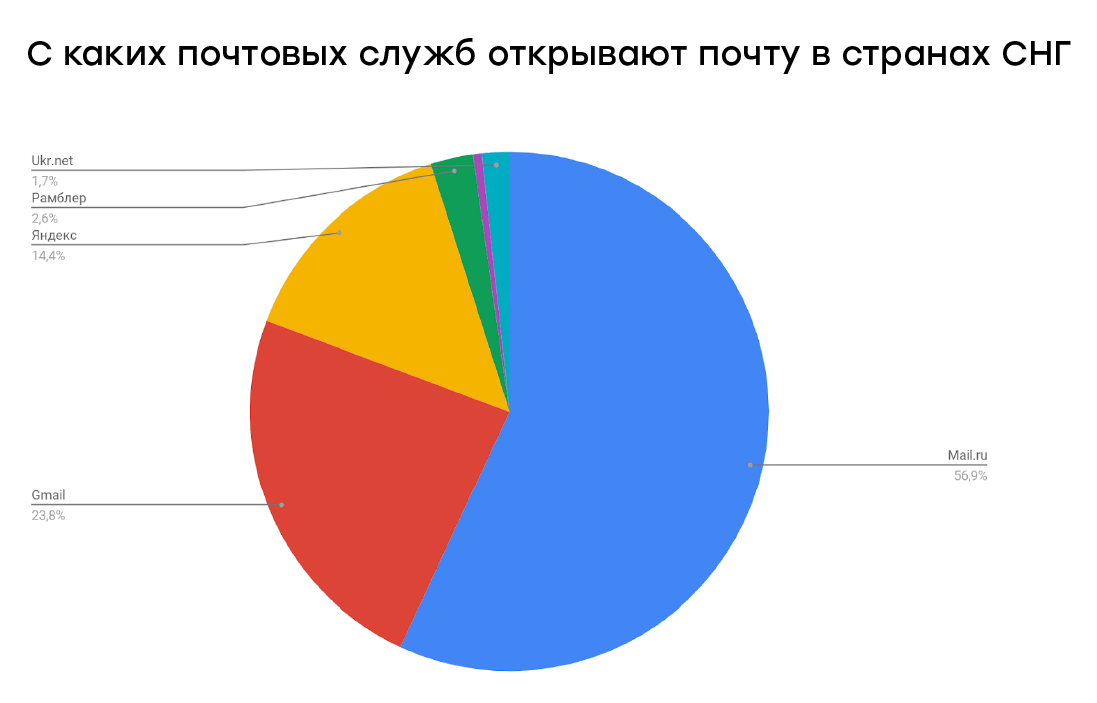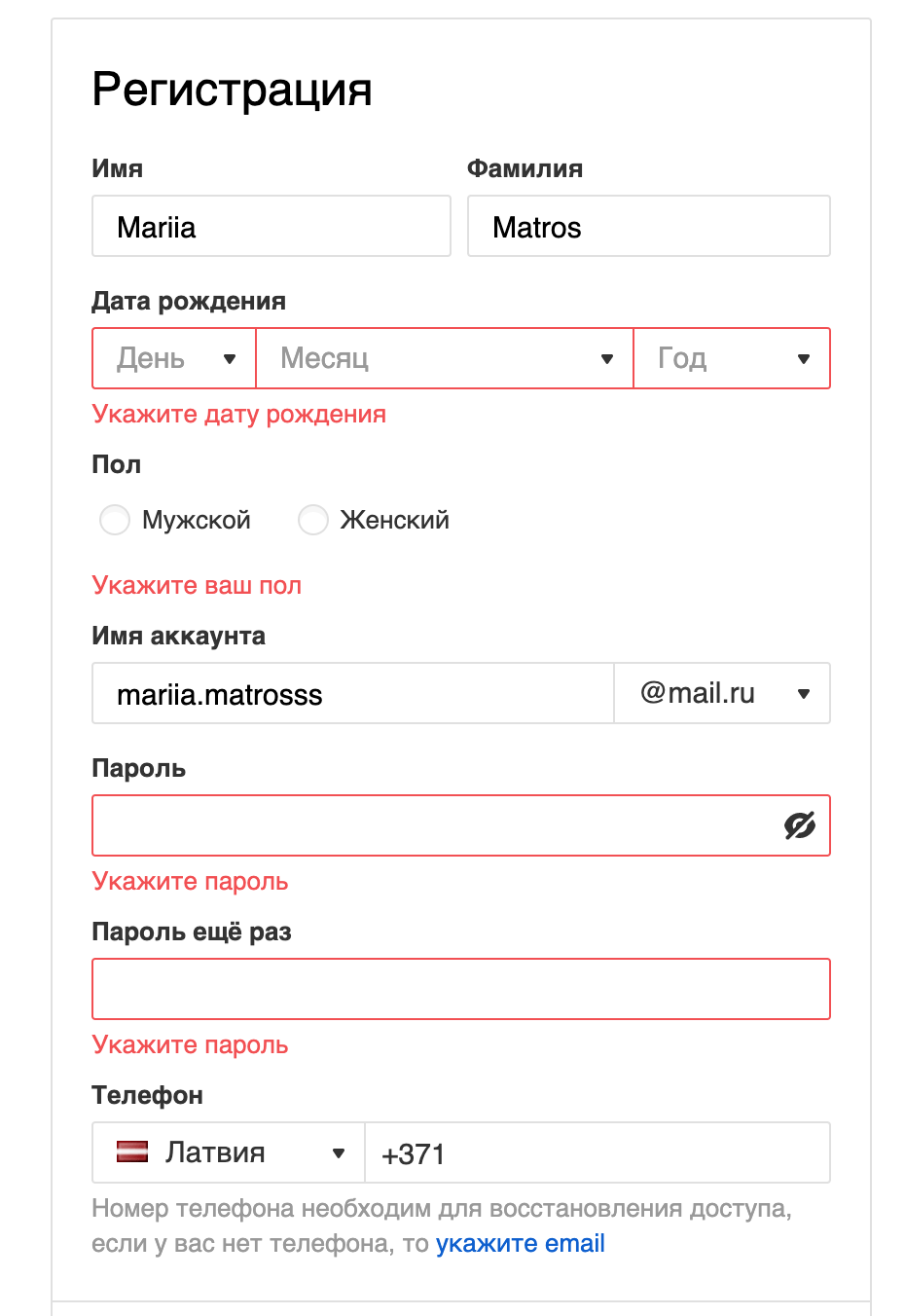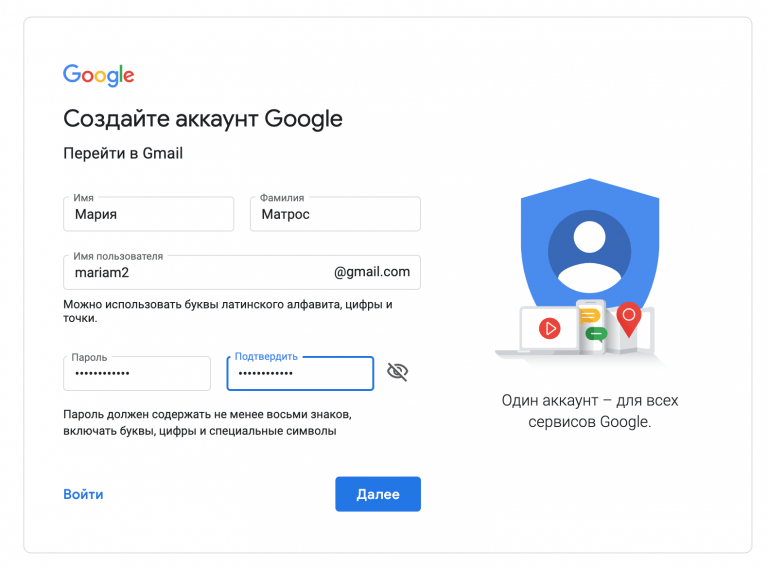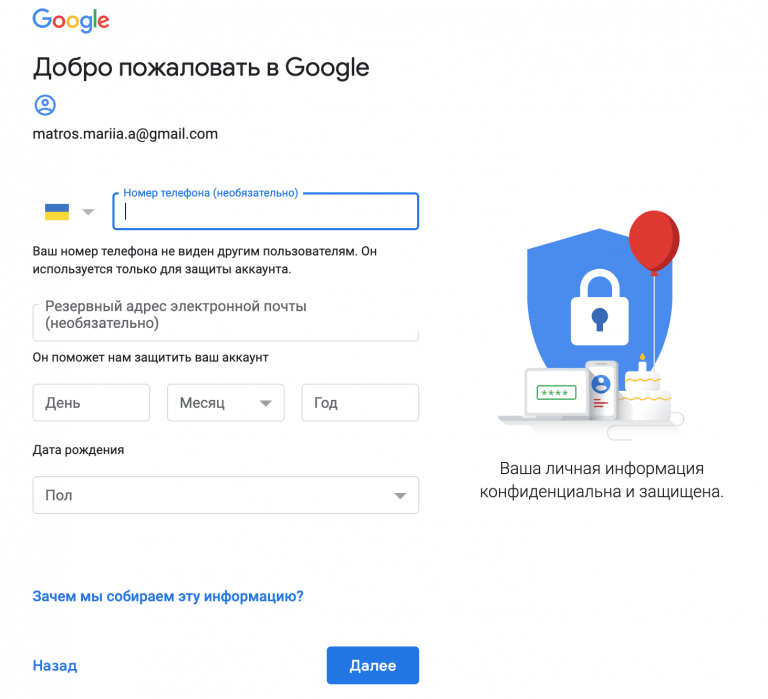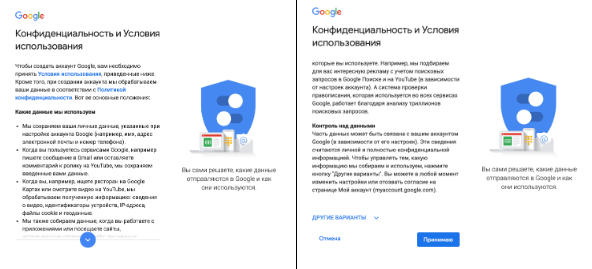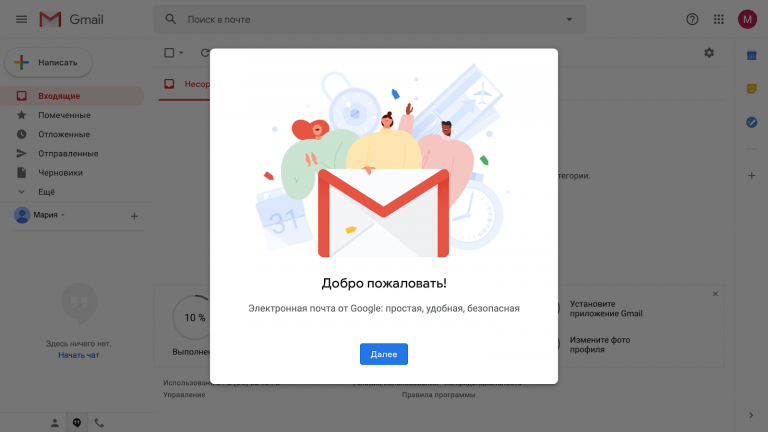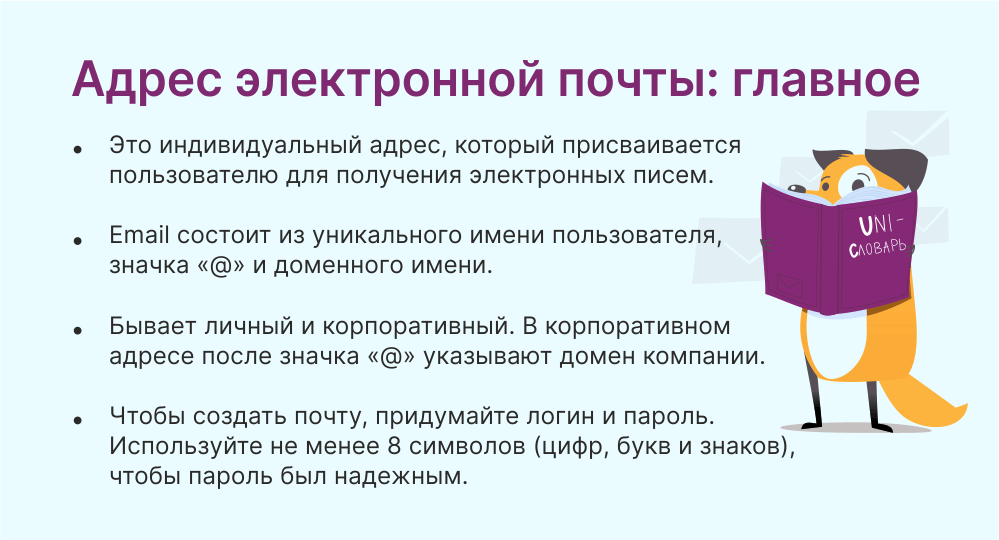
«Почему не отвечаешь?», «Мне ничего не приходило на почту!», «Вы мне не можете скинуть письмо с документами?!» — это всё вопросы и претензии, которые я неоднократно получал как на рабочем месте, так и на этом блоге… 👀
Самое интересное во всем этом — что в этих случаях в принципе нельзя было ответить и отправить e-mail, так как адрес был неправильно написан. И человеку на том конце провода никогда ничего не докажешь…
Собственно, после очередного такого «случая» решил набросать небольшой ликбез по этой теме (теперь будет куда поставить ссылку в случае очередной подобной претензии…👌).
*
📌 В помощь!
Как создать электронную почту: e-mail (на портале mail.ru). Настройка почты — [см. пошаговую инструкцию]
*
Содержание статьи
- 1 Правильное написание e-mail адреса
- 1.1 ШАГ 1: основы
- 1.2 ШАГ 2: как завести себе почтовый ящик
- 1.3 ШАГ 3: как отправить кому-нибудь письмо на e-mail
- 1.4 ШАГ 4: как сделать свой номер мобильного адресом почты
→ Задать вопрос | дополнить
Правильное написание e-mail адреса
ШАГ 1: основы
Итак, любой e-mail адрес имеет четкую структуру: логин, @, домен. Первый и третий элементы могут существенно отличаться друг от друга, но присутствие значка «собачки» @ — обязательно!
К тому же, написание e-mail должно быть выполнено латинскими буквами (прим.: допускаются цифры, подчеркивания)!
То, что я перечислил выше — это не чье-то требование, а международный формат. Соблюдая его, вам всегда смогут ответить и переслать письмо…
См. в качестве примера скриншот ниже. 👇
Пример e-mail адреса
Пару примеров правильного написания e-mail адресов:
- Admin@ocomp.info
- Dima@mail.ru
- Alex@ya.ru
Разберу каждую часть адреса подробнее:
- 👉 «Admin» или «Dima» — это уникальный никнейм (логин), который у каждого пользователя на определенном почтовом сервисе свой (обычно, выбирается при регистрации);
- 👉 «@» — это спец. знак — разделитель. Он стоит между никнеймом (логином) и доменом. Называют его в нашей стране «собачкой» (в английском просто «at»). Чтобы набрать его на клавиатуре — используйте клавишу «2» и Shift;
- 👉 «ocomp.info», «mail.ru», «ya.ru» — доменное имя (в зависимости от выбранного сервиса почты). Например, можно завести себе бесплатный почтовый ящик на сервисе mail.ru или yandex.ru, а можно получить корпоративный адрес почты (это если вы куда-нибудь устроились работать).
Важно!
Никакие кавычки или дополнительные знаки при написании адреса электронной почты использовать не нужно (пробелы между собачкой, логином и доменом — не используются)!
Тем более важно это соблюдать, когда вы указываете свою почту в форме при регистрации на сайтах (это человек может догадаться, исправить ваш адрес, и отравить вам сообщение, а машина — нет…).
Вставка e-mail в форму
*
ШАГ 2: как завести себе почтовый ящик
Завести почту сегодня можно практически на любом крупном портале (👉 лучшие сервисы электро-почт).
Например, весьма неплохим выбором может стать 👉 почта от Яндекса.
Чтобы завести ящик, нужно-то:
- зайти на главную страничку yandex.ru
- кликнуть по ссылке «Завести почту» (расположена в углу);
- выбрать себе адрес (никнейм/логин);
- ввести свои данные (ФИО, дата рождения, телефон);
- и ву-а-я — у вас есть своя почта!
Завести почту на Яндекс
*
ШАГ 3: как отправить кому-нибудь письмо на e-mail
Так как выше в пример я взял Яндекс-почту, то и здесь уместно показать работу с ней…
После того, как вы заведете себе ящик и войдете в него, пред вами предстанет достаточно простое меню. Для создания письма — достаточно кликнуть по кнопке «Написать» в верхнем углу.
Написать сообщение
Далее:
- указать e-mail адресата (учитывая всё вышесказанное);
- указать тему сообщения (сообщения без темы часто улетают в спам и ваше письмо могут просто не увидеть…);
- если нужно отправить какие-нибудь файлы — прицепите их к сообщению с помощью инструмента «Скрепки»;
- после напишите текст сообщения и нажмите кнопку «отправить». Как видите, ничего сложного… 👇
Прикрепление к письму документов
*
ШАГ 4: как сделать свой номер мобильного адресом почты
Весьма хорошим способом перестать путаться с написанием e-mail может стать одна функция Яндекс-почты — можно свой номер мобильного использовать в качестве адреса электро-почты!
Например, вместо alex@yandex.ru — можно использовать 79271234567@yandex.ru (адреса e-mail указаны случайные). Согласитесь, это может быть очень удобным? 👍
*
Чтобы включить данную опцию, после регистрации в почте от Яндекса, зайдите в настройки личных данных и используйте функцию «Сделать адресом номер телефона» (см. скрин ниже, стрелками показано, куда нужно нажать). 👇
Сделать адресом номер телефона
После этого, вы сможете получать электронную почту как по адресу 79271234567@yandex.ru*, так и по своему прежнему (т.е., по сути, у вас будет 2 адреса e-mail, письма с которых будут поступать в один ящик!).
*
На сим сегодня всё. Дополнения приветствуются…
Всего доброго!
👋
Первая публикация: 25.09.2019
Корректировка: 20.11.2022


Полезный софт:
-
- Видео-Монтаж
Отличное ПО для создания своих первых видеороликов (все действия идут по шагам!).
Видео сделает даже новичок!
-
- Ускоритель компьютера
Программа для очистки Windows от «мусора» (удаляет временные файлы, ускоряет систему, оптимизирует реестр).
Содержание
- Формат адреса
- Как получить
- Тонкости различных сервисов
- Как правильно записывать
- Где посмотреть емаил
- Видео по теме
Адрес электронной почты записывается в строгой последовательности. Вольности вы можете себе позволить, только придумывая логин.
Формат адреса
Адрес электронной почты – уникальный идентификатор, не бывает двух одинаковых емэйлов. Он определяет и почтовый сервис, которым вы пользуетесь и ваш личный ящик.
Он формируется по четкой структуре и должен соответствовать определенным правилам. Для его составления используют только буквы латинского алфавита. Допустимы арабские цифры и некоторые непечатные знаки (нижнее подчеркивание, точка, дефис). Обязателен значок @ – эт или «собака».
Адрес электронной почты состоит из трех частей:
- Логин – это имя, которое вы даете своей почте. Именно благодаря ему сервис будет понимать, на какой емэил доставить письмо. Важно придуманный однажды логин нельзя потом изменить. Можно удалить, создать новый или еще один. Для его записи используют латинские буквы в сочетании с арабскими цифрами или непечатными символами.
- Разделитель – значок @. Он отделяет ваш логин от названия домена почтового сервиса. Иногда в онлайн-переписках его заменяют на (a), чтобы емэил не попал в базу данных спам-ботов. Но если вы хотите отправить письмо или указываете почту для регистрации на сайтах, приложениях или играх, в соцсетях, то правильно писать @. Указывайте символ «собака» и тогда, когда неуверены, что человек поймет сочетание заменитель.
- Домен. Это URL почтового сервиса, на котором вы зарегистрировали емэил. Он часто совпадает с его названием, например, yandex, mail, gmail. Но многие сервисы предлагают дополнительные домены. За отдельную плату можно создать именной домен, civildo@aviavtomatika.ru. Ими обычно пользуются крупные компании.
Пример адреса электронной почты – mari_23@yandex.ru
Как получить
Для того чтобы получить адрес электронной почты нужно зарегистрироваться в одном из бесплатных сервисов. Алгоритм действий простой.
- Выбираем почтовый сервис (Яндекс, Rambler, Mail.ru, Gmail, QIP).
- Заходим на официальный сайт выбранной компании и кликаем по значку «Создать почту» или «Зарегистрироваться».
- Далее заполняйте анкету.
Для регистрации указываю фамилию, имя, придумывают логин. Далее в соответствующие графы вписывают пароль. Если боитесь забыть учётные данные, запишите их.
Проще всего составить логин из сочетания имени и фамилии. Если он уже занят добавьте цифры. Такая почта подойдет для делового общения.
Для личной переписки воспользуйтесь ником, который часто используете в интернете. Так онлайн-друзья с легкостью найдут вас по нему.
Часть почтовых сервисов сами генерируют логин из сочетания указанных вами имени и фамилии с годом рождения. Не мудрите с логином, бессмысленный набор символов сложнее запомнить. Да и перепутать их местами легко.
Если придумать логин к почте не получается, воспользуйтесь онлайн-генератором никнеймов. Например, никнейм.ру.
Тонкости различных сервисов
Каждый почтовый ящик уникален. Но с одним и тем, же логином может существовать несколько ящиков. Они будут различаться доменами. В зависимости от сервиса электронная почта будет принадлежать либо вам, либо другому человеку.
Яндекс.ру
При регистрации емэйла на Яндексе вы получаете основной домен yandex.ru. А бонусом даются еще несколько – @ya.ru, @yandex.com, @yandex.by, @yandex.ua, @yandex.kz.
Можете дописать к логину любой из них, и письма будут приходить на ящик. То есть если одному знакомому оставили почту mari_23@yandex.ru, а другому – mari_23@ ya.ru, вы прочтете письма и от одного друга и от другого.
Если при регистрации яндекс почты указали номер мобильного телефона, то он может играть роль логина в вашем емэйле. Образец такой почты – +7951ХХХХХ20@yadex.ru.
Маил.ру
Обычно мейловская почта пишется, например, так mari_23@mail.ru. Но если логин mari_23 уже занят сервис предложит варианты домена на выбор –
@list.ru, @bk.ru, @inbox.ru. И тут, если ошибетесь окончанием почты, описка будет фатальной. Письма будут приходить не вам, а кому-то другому или вовсе не будут отправляться.
Рамблер.ру
Сервис дает возможность добавить к логину окончания @rambler.ru, @lenta.ru, @autorambler.ru, @myrambler.ru, @ro.ru. Но тут, как и с маил.ру – пользоваться всеми сразу не сможете.
Поэтому для Рамблера важно определенным образом указывать весь адрес электронной почты. Например, mari_23@myrambler.ru.
Как правильно записывать
При регистрации в социальных сетях, онлайн-магазинах, играх или форумах адрес электронной почты указывается полностью. А его части располагают в правильном порядке логин + @ + домен. Конечно, значок «+» не ставится. Запрещены и пробелы между частями емэйла.
Когда вы указываете электронную почту на официальных бланках допустимо перед непосредственно адресом написать e-mail. На визитках эта приставка необязательна.
В личной переписке в мессенджерах или в социальных сетях можно просто сообщить собеседнику логин и сказать, каким сервисом пользуетесь. При условии, что основной домен rambler.ru или mail.ru. Например, mari_23 на рамлере или kirill99 на джимейле. Если нет уверенности, что собеседник поймет верно, запишите полный адрес.
Где посмотреть емаил
Адрес email легко узнать, он указан внутри почтового ящика. У Яндекс и Маил – это правый верхний угол.
В Рамблер почте нужно кликнуть на имя верхнем правом углу экрана. А в Gmail – нужно кликнуть по иконке с личным фото или человечком, если вы не устанавливали аватарку.
И также он автоматически прописывается в каждом отправляемом вами электронном письме.
Адрес электронной почты важно записывать правильно. В обратном случае письма просто не дойдут до вас. Помните пробелы и точки между его частями недопустимы, а значок @ обязателен.
В наше время без электронной почты не обойтись никому. Общение по сети приобрело массовый характер. Многие вопросы — и деловые, и личные — решаются именно таким образом. Это удобно, быстро и не требует особых усилий. Подобный метод обмена информацией доступен для каждого пользователя, у которого есть компьютер и интернет. Поэтому важно знать, что такое адрес электронной почты и как правильно его писать. Благодаря этому сервису можно оперативно с кем-то связаться, переслать важные документы или просто пообщаться с человеком, который находится далеко от вас.
Мы расскажем вам, как стать обладателем почтового ящика в Интернете
Об электронной почте
Сервисы Electronic Mail (e-mail) используются повсюду. У каждой организации или учреждения наряду с другими контактами всегда указан и адрес электронной почты. Он должен быть у любого пользователя ПК. Без него нельзя зарегистрироваться на сайтах, подписываться на рассылки, получать доступы к закрытым ресурсам и форумам. Он нужен также для работы некоторых программ.
Такое распространение электронной почты связано с тем, что сервисы для пересылки сообщений доступны и понятны каждому человеку. Они появились очень давно, но до сих пор остаются актуальными. Для электронной почты не нужен мощный компьютер или быстрый интернет. Существует много различных сайтов, на которых её можно зарегистрировать. У всех разный интерфейс и функционал, поэтому найдутся варианты на любой вкус. Если вам не нравятся онлайн-сервисы, установите на компьютер специальные утилиты — почтовые клиенты.
Адрес e-mail уникален для каждого пользователя. Это как номер телефона или индекс — нет двух одинаковых.
Можно отправлять сообщения любой длины, добавлять к ним вложения: файлы, картинки, документы. Такое письмо будет доставлено мгновенно. Большинство сервисов электронной почты имеют огромный инструментарий для форматирования текста. Доступны разные шрифты, начертания, цвета, вставка фона, рисунков. Вы можете отправить настоящую поздравительную открытку. И получатель увидит её в тот же день.
Из чего состоит e-mail адрес?
E-mail имеет чёткую структуру и формируется определённым образом. Он состоит из нескольких элементов. Сами элементы могут различаться, но они должны быть написаны латинскими буквами. Допустимо использование цифр, знаков препинания и некоторых других символов. Это общепринятый стандарт. Вот как выглядит адрес электронной почты: «login@domen». Разберём поподробнее каждую часть адреса.
Структура E-mail адреса не так уж сложна
- Login (логин). Это ваше имя пользователя или «никнейм». Уникальный идентификатор, по которому система приёма и отправки сообщений будет вычислять, что это именно ваш e-mail. Его надо придумать самостоятельно. Он может быть каким угодно, главное, чтобы не совпадал с никнеймом, который уже существует в почтовом сервисе. При регистрации электронной почты может появиться предупреждение «Этот логин уже занят» или нечто подобное. Тогда надо придумать и записать другое имя. Необязательно менять его полностью, — достаточно добавить к нему какие-то цифры или символы, чтобы он стал уникальным.
- Далее идёт символ-разделитель «@». Его называют «Коммерческое at» или просто «Собака». На клавиатуре он находится там же, где кнопка с цифрой «2» (напечатать его можно в английской раскладке). Этот знак обязателен во всех e-mail — он стоит между логином и доменом. В разных странах его именуют по-разному. Например, в Финляндии это «Кошка» или «Кошачий хвост», в Италии — «Улитка», в Болгарии — «Обезьяна», в США — просто «at». На общественных интернет-ресурсах этот символ иногда заменяют на «at» в скобках. Это делается, чтобы адрес не попадал в базы спам-ботов. При отправке сообщений надо заменять «at» на «@».
- Domen (домен). URL сервиса, на котором зарегистрирован e-mail. Это может быть корпоративный или любой бесплатный сайт (к примеру, mail.ru или gmail.com). Многие ресурсы предлагают несколько вариантов доменов. Его нельзя придумать самостоятельно — можно только выбрать. Многие организации создают собственные домены, но это делается за отдельную плату.
Посмотрите, как написать адрес электронной почты, на конкретном примере: «nickname@mail.ru», «corporation@gmail.com».
Как зарегистрировать электронную почту?
Несколько сайтов с функцией бесплатной регистрации e-mail:
- Yandex
- Gmail
- Rambler
- Qip
Просмотр входящей почты в Гугл довольно удобен
Они предназначены не только для создания электронной почты. У каждого из них огромный набор информационных, развлекательных или просто полезных сервисов. Чтобы получить персональный адрес, необходимо сделать следующее:
- Зайдите на ресурс.
- Там будет кнопка «Создать аккуант», «Зарегистрироваться», «Зарегистрировать почту» или что-то подобное.
- Заполните поля. Обычно необходимо написать имя, желаемый логин, указать контрольный вопрос и ответ на него, задать пароль. Если не хотите вводить реальные ФИО, можете заменить его на никнейм. Но в e-mail, которое нужно для работы или каких-то официальных дел, лучше писать корректные данные пользователя, чтобы они отображались в сообщениях вашим клиентам, коллегам и работодателям.
- Пароль желательно сделать сложным. Не связанным с логином, именем, датой рождения или чем-то похожим. Таким, чтобы его нельзя было подобрать.
- Логин может состоять из букв латинского алфавита, цифр или специальных знаков. Если вы введёте недопустимый символ, система об этом предупредит.
- Подтвердите регистрацию.
Диалог создания почтового ящика в одной из систем
Крупные организации регистрируют собственные домены. Это выглядит презентабельно. Серьёзные компании предпочитают не использовать бесплатные сервисы e-mail.
Если не знаете, как придумать адрес электронной почты, попробуйте что-то в этом роде:
- Фамилия с инициалами или сокращённо полное имя. Можно добавить цифры, точки, тире, нижнее подчёркивание. Удобно для делового общения. По логину сразу понятно, кому он принадлежит.
- Никнейм, который вы часто используете в интернете. Те, кто знают вас по этому нику, смогут распознать вашу почту с первого взгляда.
- В некоторых сервисах адрес автоматически формируется из вашего имени (если вы его указали). Система предложит несколько логинов на выбор. Если вам подходит один из них — используйте его.
- Лучше создать ник, который легко запомнить. Не стоит задавать бессвязный набор букв или цифр, если вы собираетесь в дальнейшем использовать сервис для общения или работы.
Как отправить e-mail?
Вы хотите отправить что-то на e-mail? Сделать это очень просто.
- Войдите на сайт электронной почты или запустите свой почтовый клиент.
- Нажмите кнопку «Новое письмо». Она может называться и по-другому.
- В поле «Кому» введите адрес.
- В поле «Тема» опишите вкратце, о чём ваше сообщение. У получателя первым делом отобразиться e-mail отправителя и эта тема.
- Самое большое поле предназначено для тела (содержания) письма.
- Когда закончите, кликните на «Отправить».
Интерфейс веб-почты у различных сервисов примерно одинаков
Разобраться, как формируется адрес пользователя электронной почты, достаточно легко. Он состоит из трёх частей: логина, символа-разделителя @ и доменного имени. Эти элементы фиксированы и их нельзя менять местами. Каждый e-mail — это уникальный набор символов, не существует двух одинаковых. Логин можно придумать, домен — только выбрать из предложенных вариантов. Адрес должен состоять из латинских букв, цифр или некоторых символов.
Адрес электронной почты (email) — индивидуальный адрес, который присваивается каждому пользователю для получения электронных писем. Email состоит из уникального имени пользователя почты, значка «@», обозначающего, что это email-адрес, и доменного имени.
Электронная почта — это такой же важный инструмент связи, как и телефон. Электронная почта используется для общения по работе, для регистрации в социальных сетях и мессенджерах, для покупок в интернет-магазинах, для официальных запросов в госорганы.
Всего в мире более 4 млрд почтовых аккаунтов на 7,9 миллиардов населения Земли. Конечно, не у каждого жителя есть электронная почта, зато у некоторых пользователей по 5 электронных ящиков для разных целей.
Адреса бывают личные и корпоративные. Личные email используют для личного общения, покупок в интернет-магазинах, получения рассылок.
Чтобы завести личную почту, нужно зарегистрироваться на сайте одного из популярных почтовых провайдеров: Gmail, Mail.ru, Яндекс. Почты, Рамблера. При этом домен выбранного провайдера будет присутствовать в полученном адресе электронной почты. Например, maria.matros@gmail.com.
Корпоративную почту используют в рабочих целях: для общения и обмена информацией с коллегами, клиентами или партнерами. В отличие от личной почты, в корпоративном адресе вместо доменного имени почтового клиента указывается домен компании (адрес ее сайта). Например, m.matros@unisender.com.
Кроме того, корпоративную почту с соответствующими настройками аутентификации можно использовать для email-рассылок. Слать массовые рассылки с личной почты не стоит.
Как создать личный электронный ящик
Для создания электронной почты нужно уникальное имя пользователя, состоящее из латинских символов и пароль, защищающий почту. Уникальное имя пользователя + знак «@» + домен, к которому привязана почта — это и есть электронный адрес.
Все адреса электронной почты должны быть уникальными, чтобы точно идентифицировать получателя. Именно поэтому сейчас нельзя зарегистрировать почту, к примеру, ivan.ivanov@gmail.com — этот адрес уже занят каким-то пользователем. Но если ivan.ivanov удалит свой ящик на Gmail — имя снова будет свободно и вы сможете его занять.
На разных доменах может быть одинаковое имя пользователя. К примеру, mariia.matros@gmail.com и mariia.matros@unisender.com.
В почте можно использовать латинские буквы, символ нижнего подчеркивания «_», иногда точку. Символы, которые можно использовать, ограничены протоколами RFC, это общие правила использования символов в интернете. Почтовик, как правило, указывает, какие символы можно и нельзя использовать в логине. Недопустимые спец-символы почтовый сервис подчеркнет во время создания почтового ящика.
Вот ограничения по символам в Почте Mail.ru. У остальных провайдеров они примерно такие же.
Для примера создадим электронную почту на сайте Почта Mail.ru.
1. Заходим на главную Почта Mail.ru.
2. Выбираем «Создать ящик» возле окошка «Вход в почту».
3. Попадаем на главную страницу создания аккаунта в Почте Mail.ru.
4. Заполняем форму создания почтового ящика.
Форма регистрации Почты Mail.ru
5. Заходим в почту с помощью пары логин-пароль, которую ввели при регистрации.
6. Электронная почта готова. Вы можете указывать ее в формах регистрации, подписываться на рассылки — вам будут приходить письма.
Чтобы письма приходили, важно точно указывать адрес электронной почты. Если при заполнении почты опечататься хотя бы на один символ, почта придет другому человеку или вернется отправителю с сообщением «Не существует такого email-адреса».
Для создания почты достаточно пары логин-пароль. Но современные почтовые системы часто просят номер телефона или резервный электронный почтовый адрес, чтобы можно было восстановить доступ к почте, если пользователь забудет свой пароль. Также просят заполнить имя, пол, дату рождения, чтобы сервис идентифицировал пользователя, который регистрирует почту.
Имя будет указано в поле «Отправитель». Если это поле не заполнено, в поле «Отправитель» будет дублироваться адрес электронной почты.
Советы по выбору адреса личной электронной почты
- Если вы собираетесь использовать почту для официальной переписки типа общения с заказчиками или поиска работы, лучше сделать почту с именем и фамилией.
- Если у вас популярная фамилия, можно добавить в логин почты цифры, так как ваше имя может быть уже занято.
- Если вы собираетесь использовать почту для получения фриланс-заказов, укажите в логине почты ваш номер телефона — вам будет удобно диктовать почту по телефону и лично.
- Логином почты может быть ваш ник в интернете, то есть ваше прозвище. Этот ник можно использовать в портфолио, как имя пользователя в соцсетях. С помощью ника ваш аккаунт на разных платформах можно будет найти через поиск. Если вы заведете почту на ник, больше шансов, что почтовый адрес будет уникальным. Пример: ksoftware — это блог Николая Товеровского, известного эксперта в области дизайна интерфейсов и управления проектами. Такой адрес и у его почты.
- Если вы хотите сохранить анонимность, выберите любое слово для логина почты и не заполняйте имя.
- Помните, что почту должно быть удобно диктовать и записывать от руки — с такой почтой вероятность, что все нужные письма до вас дойдут, гораздо выше.
Почта Mail.ru составила памятку о том, как организовать почту и как ею пользоваться.
Советы по созданию пароля для электронной почты
Пароль к электронной почте — один из самых важных паролей, так как получив доступ к почте, злоумышленники смогут сбросить пароли всех остальных сервисов и сайтов, которые зарегистрированы на эту почту. С одной стороны, пароль должен быть надежен, а с другой — его важно помнить.
Некоторые сайты создают дополнительные требования к паролям: не использовать пароли, которые уже были использованы, обязательно использовать и цифры, и буквы, и спецсимволы, использовать буквы разного регистра.
При регистрации почтовый сервис сам покажет дополнительные требования к созданию пароля.
Вот что Почта Mail.ru думает о стандартном пароле qwert
Несколько советов от разработчиков из «Студии Касперского»:
- Пароль должен содержать 8 символов.
- Лучше не указывать в пароле личную информацию типа даты рождения — ее легко узнать из профиля в соцсети.
- Пароль лучше менять хотя бы раз в 3 месяца.
- Не стоит использовать одинаковые пароли на разных сервисах.
Читать все советы
Как узнать свой адрес электронной почты и пароль
Адрес электронной почты всегда можно посмотреть в личном кабинете почтового сервиса, а в «Настройках почты» изменить пароль. Как правило, пароль нельзя посмотреть, его можно только восстановить. Для этого нужно или ввести старый пароль, или ввести резервную электронную почту, или номер телефона. На почту или телефон придет временный пароль, с помощью которого можно зайти в аккаунт почты и в «Настройках» установить новый пароль.
При создании корпоративной электронной почты все эти задачи выполняет системный администратор, а сотрудник получает пару логин-пароль и может зайти в уже созданную почту. Читайте статью, о том, как сделать корпоративную почту на своем домене.
Как создать электронный ящик на Gmail
1.Зайти на главную страницу почтового сервиса Gmail.
2.Нажать на кнопку «Создать аккаунт».
3.Ввести имя, уникальный адрес почты и пароль.
Первый экран создания почты Gmail
4.Ввести номер телефона или резервную почту. Это не обязательно, но без них не получится восстановить доступ к почте.
Заполнение резервных способов восстановления пароля в Gmail
5.Принять правила Политики конфиденциальности Gmail (без этого создать почту не получится).
6.Почта создана!
Важно. Google постоянно меняет внешний вид экрана создания почты, поэтому когда вы будете регистрировать почту, этот путь может выглядеть немного по-другому.
Главные мысли
An email address identifies an email box to which messages are delivered. While early messaging systems used a variety of formats for addressing, today, email addresses follow a set of specific rules originally standardized by the Internet Engineering Task Force (IETF) in the 1980s, and updated by RFC 5322 and 6854. The term email address in this article refers to just the addr-spec in Section 3.4 of RFC 5322. The RFC defines address more broadly as either a mailbox or group. A mailbox value can be either a name-addr, which contains a display-name and addr-spec, or the more common addr-spec alone.
An email address, such as john.smith@example.com, is made up from a local-part, the symbol @, and a domain, which may be a domain name or an IP address enclosed in brackets. Although the standard requires the local part to be case-sensitive,[1]
it also urges that receiving hosts deliver messages in a case-independent manner,[2]
e.g., that the mail system in the domain example.com treat John.Smith as equivalent to john.smith; some mail systems even treat them as equivalent to johnsmith.[3] Mail systems often limit the users’ choice of name to a subset of the technically permitted characters.
With the introduction of internationalized domain names, efforts are progressing to permit non-ASCII characters in email addresses.[citation needed]
Message transport[edit]
An email address consists of two parts, a local part[a] and a domain; if the domain is a domain name rather than an IP address then the SMTP client uses the domain name to look up the mail exchange IP address.
The general format of an email address is local-part@domain, e.g. jsmith@[192.168.1.2], jsmith@example.com. The SMTP client transmits the message to the mail exchange, which may forward it to another mail exchange until it eventually arrives at the host of the recipient’s mail system.
The transmission of electronic mail from the author’s computer and between mail hosts in the Internet uses the Simple Mail Transfer Protocol (SMTP), defined in RFC 5321 and 5322, and extensions such as RFC 6531. The mailboxes may be accessed and managed by applications on personal computers, mobile devices or webmail sites, using the SMTP protocol and either the Post Office Protocol (POP) or the Internet Message Access Protocol (IMAP).
When transmitting email messages, mail user agents (MUAs) and mail transfer agents (MTAs) use the domain name system (DNS) to look up a Resource Record (RR) for the recipient’s domain. A mail exchanger resource record (MX record) contains the name of the recipient’s mailserver. In absence of an MX record, an address record (A or AAAA) directly specifies the mail host.
The local part of an email address has no significance for intermediate mail relay systems other than the final mailbox host. Email senders and intermediate relay systems must not assume it to be case-insensitive, since the final mailbox host may or may not treat it as such. A single mailbox may receive mail for multiple email addresses, if configured by the administrator. Conversely, a single email address may be the alias to a distribution list to many mailboxes. Email aliases, electronic mailing lists, sub-addressing, and catch-all addresses, the latter being mailboxes that receive messages regardless of the local part, are common patterns for achieving a variety of delivery goals.
The addresses found in the header fields of an email message are not directly used by mail exchanges to deliver the message. An email message also contains a message envelope that contains the information for mail routing. While envelope and header addresses may be equal, forged email addresses — also called spoofed email addresses — are often seen in spam, phishing, and many other Internet-based scams. This has led to several initiatives which aim to make such forgeries of fraudulent emails easier to spot.
Syntax[edit]
The format of an email address is local-part@domain, where the local part may be up to 64 octets long and the domain may have a maximum of 255 octets.[4] The formal definitions are in RFC 5322 (sections 3.2.3 and 3.4.1) and RFC 5321—with a more readable form given in the informational RFC 3696[b] and the associated errata.
An email address also may have an associated display name for the recipient, which precedes the address specification, now surrounded by angled brackets, for example: John Smith <john.smith@example.org>.
Earlier forms of email addresses for other networks than the Internet included other notations, such as that required by X.400, and the UUCP bang path notation, in which the address was given in the form of a sequence of computers through which the message should be relayed. This was widely used for several years, but was superseded by the Internet standards promulgated by the Internet Engineering Task Force (IETF).
Local-part[edit]
The local-part of the email address may be unquoted or may be enclosed in quotation marks.
If unquoted, it may use any of these ASCII characters:
- uppercase and lowercase Latin letters
AtoZandatoz - digits
0to9 - printable characters
!#$%&'*+-/=?^_`{|}~ - dot
., provided that it is not the first or last character and provided also that it does not appear consecutively (e.g.,John..Doe@example.comis not allowed).[5]
If quoted, it may contain Space, Horizontal Tab (HT), any ASCII graphic except Backslash and Quote and a quoted-pair consisting of a Backslash followed by HT, Space or any ASCII graphic; it may also be split between lines anywhere that HT or Space appears. In contrast to unquoted local-parts, the addresses ".John.Doe"@example.com, "John.Doe."@example.com and "John..Doe"@example.com are allowed.
The maximum total length of the local-part of an email address is 64 octets.[6]
Note that some mail servers support wildcard recognition of local parts, typically the characters following a plus and less often the characters following a minus, so fred+bah@domain and fred+foo@domain might end up in the same inbox as fred+@domain or even as fred@domain. This can be useful for tagging emails for sorting (see below), and for spam control.[7] Braces { and } are also used in that fashion, although less often.[citation needed]
- space and special characters
"(),:;<>@[]are allowed with restrictions (they are only allowed inside a quoted string, as described in the paragraph below, and in that quoted string, any backslash or double-quote must be preceded once by a backslash); - comments are allowed with parentheses at either end of the local-part; e.g.,
john.smith(comment)@example.comand(comment)john.smith@example.comare both equivalent tojohn.smith@example.com.
In addition to the above ASCII characters, international characters above U+007F, encoded as UTF-8, are permitted by RFC 6531, though even mail systems that support SMTPUTF8 and 8BITMIME may restrict which characters to use when assigning local-parts.
A local part is either a Dot-string or a Quoted-string; it cannot be a combination.
Quoted strings and characters, however, are not commonly used.[citation needed] RFC 5321 also warns that «a host that expects to receive mail SHOULD avoid defining mailboxes where the Local-part requires (or uses) the Quoted-string form».
The local-part postmaster is treated specially—it is case-insensitive, and should be forwarded to the domain email administrator. Technically all other local-parts are case-sensitive, therefore jsmith@example.com and JSmith@example.com specify different mailboxes; however, many organizations treat uppercase and lowercase letters as equivalent. Indeed, RFC 5321 warns that «a host that expects to receive mail SHOULD avoid defining mailboxes where … the Local-part is case-sensitive».
Despite the wide range of special characters which are technically valid, organisations, mail services, mail servers and mail clients in practice often do not accept all of them. For example, Windows Live Hotmail only allows creation of email addresses using alphanumerics, dot (.), underscore (_) and hyphen (-).[8] Common advice is to avoid using some special characters to avoid the risk of rejected emails.[9]
Domain[edit]
The domain name part of an email address has to conform to strict guidelines: it must match the requirements for a hostname, a list of dot-separated DNS labels, each label being limited to a length of 63 characters and consisting of:[5]: §2
- uppercase and lowercase Latin letters
AtoZandatoz; - digits
0to9, provided that top-level domain names are not all-numeric; - hyphen
-, provided that it is not the first or last character.
This rule is known as the LDH rule (letters, digits, hyphen). In addition, the domain may be an IP address literal, surrounded by square brackets [], such as jsmith@[192.168.2.1] or jsmith@[IPv6:2001:db8::1], although this is rarely seen except in email spam. Internationalized domain names (which are encoded to comply with the requirements for a hostname) allow for presentation of non-ASCII domains. In mail systems compliant with RFC 6531 and RFC 6532 an email address may be encoded as UTF-8, both a local-part as well as a domain name.
Comments are allowed in the domain as well as in the local-part; for example, john.smith@(comment)example.com and john.smith@example.com(comment) are equivalent to john.smith@example.com.
Reserved domains[edit]
RFC 2606 specifies that certain domains, for example those intended for documentation and testing, should not be resolvable and that as a result mail addressed to mailboxes in them and their subdomains should be non-deliverable. Of note for e-mail are example, invalid, example.com, example.net, and example.org.
Examples[edit]
- Valid email addresses
simple@example.comvery.common@example.comdisposable.style.email.with+symbol@example.comother.email-with-hyphen@example.comfully-qualified-domain@example.comuser.name+tag+sorting@example.com(may go touser.name@example.cominbox depending on mail server)x@example.com(one-letter local-part)example-indeed@strange-example.comtest/test@test.com(slashes are a printable character, and allowed)admin@mailserver1(local domain name with no TLD, although ICANN highly discourages dotless email addresses[10])example@s.example(see the List of Internet top-level domains)" "@example.org(space between the quotes)"john..doe"@example.org(quoted double dot)mailhost!username@example.org(bangified host route used for uucp mailers)"very.(),:;<>[]".VERY."very@\ "very".unusual"@strange.example.com(include non-letters character AND multiple at sign, the first one being double quoted)user%example.com@example.org(% escaped mail route to user@example.com via example.org)user-@example.org(local part ending with non-alphanumeric character from the list of allowed printable characters)postmaster@[123.123.123.123](IP addresses are allowed instead of domains when in square brackets, but strongly discouraged)postmaster@[IPv6:2001:0db8:85a3:0000:0000:8a2e:0370:7334](IPv6 uses a different syntax)
- Invalid email addresses
Abc.example.com(no @ character)A@b@c@example.com(only one @ is allowed outside quotation marks)a"b(c)d,e:f;g<h>i[jk]l@example.com(none of the special characters in this local-part are allowed outside quotation marks)just"not"right@example.com(quoted strings must be dot separated or the only element making up the local-part)this is"notallowed@example.com(spaces, quotes, and backslashes may only exist when within quoted strings and preceded by a backslash)this still"not\allowed@example.com(even if escaped (preceded by a backslash), spaces, quotes, and backslashes must still be contained by quotes)1234567890123456789012345678901234567890123456789012345678901234+x@example.com(local-part is longer than 64 characters)i_like_underscore@but_its_not_allowed_in_this_part.example.com(Underscore is not allowed in domain part)QA[icon]CHOCOLATE[icon]@test.com(icon characters)
Common local-part semantics[edit]
According to RFC 5321 2.3.11 Mailbox and Address, «…the local-part MUST be interpreted and assigned semantics only by the host specified in the domain of the address.»
This means that no assumptions can be made about the meaning of the local-part of another mail server. It is entirely up to the configuration of the mail server.
Local-part normalization[edit]
Interpretation of the local part of an email address is dependent on the conventions and policies implemented in the mail server. For example, case sensitivity may distinguish mailboxes differing only in capitalization of characters of the local-part, although this is not very common.[11] Gmail ignores all dots in the local-part of a @gmail.com address for the purposes of determining account identity.[12]
Subaddressing[edit]
Some mail services support a tag included in the local-part, such that the address is an alias to a prefix of the local part. For example, the address joeuser+tag@example.com denotes the same delivery address as joeuser@example.com. RFC 5233,[13] refers to this convention as subaddressing, but it is also known as plus addressing, tagged addressing or mail extensions.
Addresses of this form, using various separators between the base name and the tag, are supported by several email services, including Andrew Project (plus),[14] Runbox (plus), Gmail (plus),[15] Rackspace (plus), Yahoo! Mail Plus (hyphen),[16] Apple’s iCloud (plus), Outlook.com (plus),[17] Proton Mail (plus),[18]
Fastmail (plus and Subdomain Addressing),[19]
postale.io (plus),[20]
Pobox (plus),[21]
MeMail (plus),[22]
MMDF (equals),
Qmail and Courier Mail Server (hyphen).[23][24] Postfix and Exim allow configuring an arbitrary separator from the legal character set.[25][26]
The text of the tag may be used to apply filtering,[23] or to create single-use, or disposable email addresses.[27]
In practice, the form validation of some web sites may reject characters such as «+» in an email address – treating them, incorrectly, as invalid characters. This can lead to an incorrect user receiving an e-mail if the «+» is silently stripped by a website without any warning or error messages. For example, an email intended for the user-entered email address foo+bar@example.com could be incorrectly sent to foobar@example.com. In other cases a poor user experience can occur if some parts of a site, such as a user registration page, allow the «+» character whilst other parts, such as a page for unsubscribing from a site’s mailing list, do not.
Validation and verification[edit]
Email addresses are often requested as input to website as validation of user existence. Other validation methods are available, such as cell phone number validation, postal mail validation, and fax validation.
An email address is generally recognized as having two parts joined with an at-sign (@), although technical specification detailed in RFC 822 and subsequent RFCs are more extensive.[28]
Syntactically correct, verified email addresses do not guarantee that an email box exists. Thus many mail servers use other techniques and check the mailbox existence against relevant systems such as the Domain Name System for the domain or using callback verification to check if the mailbox exists. Callback verification is an imperfect solution, as it may be disabled to avoid a directory harvest attack, or callbacks may be reported as spam and lead to listing on a DNSBL.
Several validation techniques may be utilized to validate a user email address. For example,[29]
- Verification links: Email address validation is often accomplished for account creation on websites by sending an email to the user-provided email address with a special temporary hyperlink. On receipt, the user opens the link, immediately activating the account. Email addresses are also useful as means of delivering messages from a website, e.g., user messages, user actions, to the email inbox.
- Formal and informal standards: RFC 3696 provides specific advice for validating Internet identifiers, including email addresses. Some websites instead attempt to evaluate the validity of email addresses through arbitrary standards, such as by rejecting addresses containing valid characters, such as + and /, or enforcing arbitrary length limitations. Email address internationalization provides for a much larger range of characters than many current validation algorithms allow, such as all Unicode characters above U+0080, encoded as UTF-8.
- Algorithmic tools: Large websites, bulk mailers and spammers require efficient tools to validate email addresses. Such tools depend upon heuristic algorithms and statistical models.[30]
- Sender reputation: An email sender’s reputation may be used to attempt to verify whether the sender is trustworthy or a potential spammer. Factors that may be incorporated into an assessment of sender reputation include the quality of past contact with or content provided by, and engagement levels of, the sender’s IP address or email address.
- Browser-based verification: HTML5 forms implemented in many browsers allow email address validation to be handled by the browser.[31]
Some companies offer services to validate an email address, often using an application programming interface, but there is no guarantee that it will provide accurate results.
Internationalization[edit]
The IETF conducts a technical and standards working group devoted to internationalization issues of email addresses, entitled Email Address Internationalization (EAI, also known as IMA, Internationalized Mail Address).[32] This group produced RFC 6530, 6531, 6532 and 6533, and continues to work on additional EAI-related RFCs.
The IETF’s EAI Working group published RFC 6530 «Overview and Framework for Internationalized Email», which enabled non-ASCII characters to be used in both the local-parts and domain of an email address. RFC 6530 provides for email based on the UTF-8 encoding, which permits the full repertoire of Unicode. RFC 6531 provides a mechanism for SMTP servers to negotiate transmission of the SMTPUTF8 content.
The basic EAI concepts involve exchanging mail in UTF-8. Though the original proposal included a downgrading mechanism for legacy systems, this has now been dropped.[33] The local servers are responsible for the local-part of the address, whereas the domain would be restricted by the rules of internationalized domain names, though still transmitted in UTF-8. The mail server is also responsible for any mapping mechanism between the IMA form and any ASCII alias.
EAI enables users to have a localized address in a native language script or character set, as well as an ASCII form for communicating with legacy systems or for script-independent use. Applications that recognize internationalized domain names and mail addresses must have facilities to convert these representations.
Significant demand for such addresses is expected in China, Japan, Russia, and other markets that have large user bases in a non-Latin-based writing system.
For example, in addition to the .in top-level domain, the government of India in 2011[34] got approval for «.bharat», (from Bhārat Gaṇarājya), written in seven different scripts[35][36] for use by Gujrati, Marathi, Bangali, Tamil, Telugu, Punjabi and Urdu speakers. Indian company XgenPlus.com claims to be the world’s first EAI mailbox provider,[37] and the Government of Rajasthan now supplies a free email account on domain राजस्थान.भारत for every citizen of the state.[38] A leading media house Rajasthan Patrika launched their IDN domain पत्रिका.भारत with contactable email.
Internationalization examples[edit]
The example addresses below would not be handled by RFC 5322 based servers, but are permitted by RFC 6530. Servers compliant with this will be able to handle these:
- Latin alphabet with diacritics: Pelé@example.com
- Greek alphabet: δοκιμή@παράδειγμα.δοκιμή
- Traditional Chinese characters: 我買@屋企.香港
- Japanese characters: 二ノ宮@黒川.日本
- Cyrillic characters: медведь@с-балалайкой.рф
- Devanagari characters: संपर्क@डाटामेल.भारत
Internationalization support[edit]
- Postfix mailer supports internationalized mail since 2015-02-08 with a stable release 3.0.0.[39]
- Google has support for sending emails to and from internationalized domains, but does not allow the registration of non-ASCII email addresses.[40]
- Microsoft added similar functionality in Outlook 2016[41]
- DataMail launches internationalized email support for 8 Indian languages using the XgenPlus email platform in India.[42]
Standards documents[edit]
- RFC 821 – Simple Mail Transfer Protocol (Obsoleted by RFC 2821)
- RFC 822 – Standard for the Format of ARPA Internet Text Messages (Obsoleted by RFC 2822) (Errata)
- RFC 1035 – Domain names, Implementation and specification (Errata)
- RFC 1123 – Requirements for Internet Hosts, Application and Support (Updated by RFC 2821, RFC 5321) (Errata)
- RFC 2142 – Mailbox Names for Common Services, Roles and Functions (Errata)
- RFC 2821 – Simple Mail Transfer Protocol (Obsoletes RFC 821, Updates RFC 1123, Obsoleted by RFC 5321) (Errata)
- RFC 2822 – Internet Message Format (Obsoletes RFC 822, Obsoleted by RFC 5322) (Errata)
- RFC 3696 – Application Techniques for Checking and Transformation of Names (Errata)
- RFC 4291 – IP Version 6 Addressing Architecture (Updated by RFC 5952) (Errata)
- RFC 5321 – Simple Mail Transfer Protocol (Obsoletes RFC 2821, Updates RFC 1123) (Errata)
- RFC 5322 – Internet Message Format (Obsoletes RFC 2822, Updated by RFC 6854) (Errata)
- RFC 5952 – A Recommendation for IPv6 Address Text Representation (Updates RFC 4291) (Errata)
- RFC 6530 – Overview and Framework for Internationalized Email (Obsoletes RFC 4952, 5504, 5825)
- RFC 6531 – SMTP Extension for Internationalized Email (Obsoletes RFC 5336)
- RFC 6854 – Update to Internet Message Format to Allow Group Syntax in the «From:» and «Sender:» Header Fields (Updates RFC 5322)
See also[edit]
- Anti-spam techniques
- Email client
- Email box
- Email authentication
- International email
Notes[edit]
- ^ Sometimes a user name, but not always.
- ^ Written by J. Klensin, the author of RFC 5321
References[edit]
- ^ J. Klensin (October 2008). «General Syntax Principles and Transaction Model». Simple Mail Transfer Protocol. p. 15. sec. 2.4. doi:10.17487/RFC5321. RFC 5321.
The local-part of a mailbox MUST BE treated as case sensitive.
- ^ J. Klensin (October 2008). «General Syntax Principles and Transaction Model». Simple Mail Transfer Protocol. p. 15. sec. 2.4. doi:10.17487/RFC5321. RFC 5321.
However, exploiting the case sensitivity of mailbox local-parts impedes interoperability and is discouraged.
- ^ «…you can add or remove the dots from a mail address without changing the actual destination address; and they’ll all go to your inbox…», Google.com
- ^ Klensin, J. (October 2008). «Size Limits and Minimums». Simple Mail Transfer Protocol. IETF. sec. 4.5.3.1. doi:10.17487/RFC5321. RFC 5321.
- ^ a b
Klensin, J. (February 2004). RFC 3696. IETF. doi:10.17487/RFC3696. Retrieved 2017-08-01.: §3 - ^
Klensin, J. (October 2008). RFC 5321. IETF. sec. 4.5.3.1.1. doi:10.17487/RFC5321. Retrieved 2019-08-01. - ^ «Send emails from a different address or alias — Use Gmail aliases». Gmail Help. Archived from the original on 7 December 2019. Retrieved 13 December 2019.
- ^ «Sign up for Windows Live». Retrieved 2008-07-26.. However, the phrase is hidden, thus one has to either check the availability of an invalid ID, e.g., me#1, or resort to alternative displaying, e.g., no-style or source view, in order to read it.
- ^ «Characters in the local part of an email address». Retrieved 2016-03-30.
- ^ «New gTLD Dotless Domain Names Prohibited». www.icann.org. ICANN. Retrieved 23 March 2020.
- ^ Are Email Addresses Case Sensitive? by Heinz Tschabitscher
- ^ «Receiving someone else’s mail». google.com.
- ^ «Sieve Email Filtering: Subaddress Extension». IETF. Retrieved February 9, 2019.
- ^ «An Overview of the Andrew Message System» (PDF).
- ^ «Using an address alias». google.com.
- ^ «Disposable addresses in Yahoo Mail — Yahoo Help — SLN3523». help.yahoo.com.
- ^ «Outlook.com supports simpler «+» email aliases too». Within Windows. Archived from the original on 2014-02-20.
{{cite web}}: CS1 maint: bot: original URL status unknown (link) - ^ «Addresses and Aliases». proton.me.
- ^ «Plus addressing and subdomain addressing». www.fastmail.com. Archived from the original on 2020-10-06. Retrieved 2020-10-06.
- ^ «postale.io’s FAQ on sub-addressing». postale.io. Archived from the original on 2020-10-06. Retrieved 2020-10-06.
- ^ «Can I use myaddress+extension@pobox.com with my Pobox account?». helpspot.pobox.com. n.d. Archived from the original on 2020-10-03. Retrieved 2020-10-03.
Pobox supports the use of «+anystring» (plus extensions) with any address.
- ^ «MeMail». www.memail.com. Retrieved 2020-10-06.
- ^ a b «Dot-Qmail, Control the delivery of mail messages». Archived from the original on 26 January 2012. Retrieved 27 January 2012.
- ^ Sill, Dave. «4.1.5. extension addresses». Life with qmail. Retrieved 27 January 2012.
- ^ «Postfix Configuration Parameters». postfix.org.
- ^ «Exim Configuration Parameters, «local_part_suffix»«. exim.org.
- ^ Gina Trapani (2005) «Instant disposable Gmail addresses»
- ^ «How Domino formats the sender’s Internet address in outbound messages». IBM Knowledge Center. Retrieved 23 July 2019.
- ^ «M3AAWG Sender Best Common Practices, Version 3» (PDF). Messaging, Malware and Mobile Anti-Abuse Working Group. February 2015. Retrieved 23 July 2019.
- ^ Verification & Validation Techniques for Email Address Quality Assurance by Jan Hornych 2011, University of Oxford
- ^ «4.10 Forms — HTML5». w3.org.
- ^ «Eai Status Pages». Email Address Internationalization (Active WG). IETF. March 17, 2006 – March 18, 2013. Retrieved July 26, 2008.
- ^ «Email Address Internationalization (eai)». IETF. Retrieved November 30, 2010.
- ^ «2011-01-25 — Approval of Delegation of the seven top-level domains representing India in various languages — myICANN.org». features.icann.org.
- ^ «Internationalized Domain Names (IDNs) | Registry.In». registry.in. Retrieved 2016-10-17.
- ^ «Now, get your email address in Hindi — The Economic Times». The Economic Times. Retrieved 2016-10-17.
- ^ «Universal Acceptance in India».
- ^ «देश में पहला, प्रदेश के हर नागरिक के लिए मुफ्त ई-वॉल्ट और ई-मेल की सुविधा शुरू — वसुन्धरा राजे». वसुन्धरा राजे (in Hindi). 2017-08-18. Retrieved 2017-08-20.
- ^ «‘Postfix stable release 3.0.0’ – MARC». marc.info.
- ^ «A first step toward more global email». Google Official Blog. Retrieved 6 August 2014.
- ^ «What’s new in Outlook 2016 for Windows», support.office.com
- ^ «DataMail launches free linguistic email service in eight Indian languages». Tech2. Retrieved 2017-11-25.
External links[edit]
An email address identifies an email box to which messages are delivered. While early messaging systems used a variety of formats for addressing, today, email addresses follow a set of specific rules originally standardized by the Internet Engineering Task Force (IETF) in the 1980s, and updated by RFC 5322 and 6854. The term email address in this article refers to just the addr-spec in Section 3.4 of RFC 5322. The RFC defines address more broadly as either a mailbox or group. A mailbox value can be either a name-addr, which contains a display-name and addr-spec, or the more common addr-spec alone.
An email address, such as john.smith@example.com, is made up from a local-part, the symbol @, and a domain, which may be a domain name or an IP address enclosed in brackets. Although the standard requires the local part to be case-sensitive,[1]
it also urges that receiving hosts deliver messages in a case-independent manner,[2]
e.g., that the mail system in the domain example.com treat John.Smith as equivalent to john.smith; some mail systems even treat them as equivalent to johnsmith.[3] Mail systems often limit the users’ choice of name to a subset of the technically permitted characters.
With the introduction of internationalized domain names, efforts are progressing to permit non-ASCII characters in email addresses.[citation needed]
Message transport[edit]
An email address consists of two parts, a local part[a] and a domain; if the domain is a domain name rather than an IP address then the SMTP client uses the domain name to look up the mail exchange IP address.
The general format of an email address is local-part@domain, e.g. jsmith@[192.168.1.2], jsmith@example.com. The SMTP client transmits the message to the mail exchange, which may forward it to another mail exchange until it eventually arrives at the host of the recipient’s mail system.
The transmission of electronic mail from the author’s computer and between mail hosts in the Internet uses the Simple Mail Transfer Protocol (SMTP), defined in RFC 5321 and 5322, and extensions such as RFC 6531. The mailboxes may be accessed and managed by applications on personal computers, mobile devices or webmail sites, using the SMTP protocol and either the Post Office Protocol (POP) or the Internet Message Access Protocol (IMAP).
When transmitting email messages, mail user agents (MUAs) and mail transfer agents (MTAs) use the domain name system (DNS) to look up a Resource Record (RR) for the recipient’s domain. A mail exchanger resource record (MX record) contains the name of the recipient’s mailserver. In absence of an MX record, an address record (A or AAAA) directly specifies the mail host.
The local part of an email address has no significance for intermediate mail relay systems other than the final mailbox host. Email senders and intermediate relay systems must not assume it to be case-insensitive, since the final mailbox host may or may not treat it as such. A single mailbox may receive mail for multiple email addresses, if configured by the administrator. Conversely, a single email address may be the alias to a distribution list to many mailboxes. Email aliases, electronic mailing lists, sub-addressing, and catch-all addresses, the latter being mailboxes that receive messages regardless of the local part, are common patterns for achieving a variety of delivery goals.
The addresses found in the header fields of an email message are not directly used by mail exchanges to deliver the message. An email message also contains a message envelope that contains the information for mail routing. While envelope and header addresses may be equal, forged email addresses — also called spoofed email addresses — are often seen in spam, phishing, and many other Internet-based scams. This has led to several initiatives which aim to make such forgeries of fraudulent emails easier to spot.
Syntax[edit]
The format of an email address is local-part@domain, where the local part may be up to 64 octets long and the domain may have a maximum of 255 octets.[4] The formal definitions are in RFC 5322 (sections 3.2.3 and 3.4.1) and RFC 5321—with a more readable form given in the informational RFC 3696[b] and the associated errata.
An email address also may have an associated display name for the recipient, which precedes the address specification, now surrounded by angled brackets, for example: John Smith <john.smith@example.org>.
Earlier forms of email addresses for other networks than the Internet included other notations, such as that required by X.400, and the UUCP bang path notation, in which the address was given in the form of a sequence of computers through which the message should be relayed. This was widely used for several years, but was superseded by the Internet standards promulgated by the Internet Engineering Task Force (IETF).
Local-part[edit]
The local-part of the email address may be unquoted or may be enclosed in quotation marks.
If unquoted, it may use any of these ASCII characters:
- uppercase and lowercase Latin letters
AtoZandatoz - digits
0to9 - printable characters
!#$%&'*+-/=?^_`{|}~ - dot
., provided that it is not the first or last character and provided also that it does not appear consecutively (e.g.,John..Doe@example.comis not allowed).[5]
If quoted, it may contain Space, Horizontal Tab (HT), any ASCII graphic except Backslash and Quote and a quoted-pair consisting of a Backslash followed by HT, Space or any ASCII graphic; it may also be split between lines anywhere that HT or Space appears. In contrast to unquoted local-parts, the addresses ".John.Doe"@example.com, "John.Doe."@example.com and "John..Doe"@example.com are allowed.
The maximum total length of the local-part of an email address is 64 octets.[6]
Note that some mail servers support wildcard recognition of local parts, typically the characters following a plus and less often the characters following a minus, so fred+bah@domain and fred+foo@domain might end up in the same inbox as fred+@domain or even as fred@domain. This can be useful for tagging emails for sorting (see below), and for spam control.[7] Braces { and } are also used in that fashion, although less often.[citation needed]
- space and special characters
"(),:;<>@[]are allowed with restrictions (they are only allowed inside a quoted string, as described in the paragraph below, and in that quoted string, any backslash or double-quote must be preceded once by a backslash); - comments are allowed with parentheses at either end of the local-part; e.g.,
john.smith(comment)@example.comand(comment)john.smith@example.comare both equivalent tojohn.smith@example.com.
In addition to the above ASCII characters, international characters above U+007F, encoded as UTF-8, are permitted by RFC 6531, though even mail systems that support SMTPUTF8 and 8BITMIME may restrict which characters to use when assigning local-parts.
A local part is either a Dot-string or a Quoted-string; it cannot be a combination.
Quoted strings and characters, however, are not commonly used.[citation needed] RFC 5321 also warns that «a host that expects to receive mail SHOULD avoid defining mailboxes where the Local-part requires (or uses) the Quoted-string form».
The local-part postmaster is treated specially—it is case-insensitive, and should be forwarded to the domain email administrator. Technically all other local-parts are case-sensitive, therefore jsmith@example.com and JSmith@example.com specify different mailboxes; however, many organizations treat uppercase and lowercase letters as equivalent. Indeed, RFC 5321 warns that «a host that expects to receive mail SHOULD avoid defining mailboxes where … the Local-part is case-sensitive».
Despite the wide range of special characters which are technically valid, organisations, mail services, mail servers and mail clients in practice often do not accept all of them. For example, Windows Live Hotmail only allows creation of email addresses using alphanumerics, dot (.), underscore (_) and hyphen (-).[8] Common advice is to avoid using some special characters to avoid the risk of rejected emails.[9]
Domain[edit]
The domain name part of an email address has to conform to strict guidelines: it must match the requirements for a hostname, a list of dot-separated DNS labels, each label being limited to a length of 63 characters and consisting of:[5]: §2
- uppercase and lowercase Latin letters
AtoZandatoz; - digits
0to9, provided that top-level domain names are not all-numeric; - hyphen
-, provided that it is not the first or last character.
This rule is known as the LDH rule (letters, digits, hyphen). In addition, the domain may be an IP address literal, surrounded by square brackets [], such as jsmith@[192.168.2.1] or jsmith@[IPv6:2001:db8::1], although this is rarely seen except in email spam. Internationalized domain names (which are encoded to comply with the requirements for a hostname) allow for presentation of non-ASCII domains. In mail systems compliant with RFC 6531 and RFC 6532 an email address may be encoded as UTF-8, both a local-part as well as a domain name.
Comments are allowed in the domain as well as in the local-part; for example, john.smith@(comment)example.com and john.smith@example.com(comment) are equivalent to john.smith@example.com.
Reserved domains[edit]
RFC 2606 specifies that certain domains, for example those intended for documentation and testing, should not be resolvable and that as a result mail addressed to mailboxes in them and their subdomains should be non-deliverable. Of note for e-mail are example, invalid, example.com, example.net, and example.org.
Examples[edit]
- Valid email addresses
simple@example.comvery.common@example.comdisposable.style.email.with+symbol@example.comother.email-with-hyphen@example.comfully-qualified-domain@example.comuser.name+tag+sorting@example.com(may go touser.name@example.cominbox depending on mail server)x@example.com(one-letter local-part)example-indeed@strange-example.comtest/test@test.com(slashes are a printable character, and allowed)admin@mailserver1(local domain name with no TLD, although ICANN highly discourages dotless email addresses[10])example@s.example(see the List of Internet top-level domains)" "@example.org(space between the quotes)"john..doe"@example.org(quoted double dot)mailhost!username@example.org(bangified host route used for uucp mailers)"very.(),:;<>[]".VERY."very@\ "very".unusual"@strange.example.com(include non-letters character AND multiple at sign, the first one being double quoted)user%example.com@example.org(% escaped mail route to user@example.com via example.org)user-@example.org(local part ending with non-alphanumeric character from the list of allowed printable characters)postmaster@[123.123.123.123](IP addresses are allowed instead of domains when in square brackets, but strongly discouraged)postmaster@[IPv6:2001:0db8:85a3:0000:0000:8a2e:0370:7334](IPv6 uses a different syntax)
- Invalid email addresses
Abc.example.com(no @ character)A@b@c@example.com(only one @ is allowed outside quotation marks)a"b(c)d,e:f;g<h>i[jk]l@example.com(none of the special characters in this local-part are allowed outside quotation marks)just"not"right@example.com(quoted strings must be dot separated or the only element making up the local-part)this is"notallowed@example.com(spaces, quotes, and backslashes may only exist when within quoted strings and preceded by a backslash)this still"not\allowed@example.com(even if escaped (preceded by a backslash), spaces, quotes, and backslashes must still be contained by quotes)1234567890123456789012345678901234567890123456789012345678901234+x@example.com(local-part is longer than 64 characters)i_like_underscore@but_its_not_allowed_in_this_part.example.com(Underscore is not allowed in domain part)QA[icon]CHOCOLATE[icon]@test.com(icon characters)
Common local-part semantics[edit]
According to RFC 5321 2.3.11 Mailbox and Address, «…the local-part MUST be interpreted and assigned semantics only by the host specified in the domain of the address.»
This means that no assumptions can be made about the meaning of the local-part of another mail server. It is entirely up to the configuration of the mail server.
Local-part normalization[edit]
Interpretation of the local part of an email address is dependent on the conventions and policies implemented in the mail server. For example, case sensitivity may distinguish mailboxes differing only in capitalization of characters of the local-part, although this is not very common.[11] Gmail ignores all dots in the local-part of a @gmail.com address for the purposes of determining account identity.[12]
Subaddressing[edit]
Some mail services support a tag included in the local-part, such that the address is an alias to a prefix of the local part. For example, the address joeuser+tag@example.com denotes the same delivery address as joeuser@example.com. RFC 5233,[13] refers to this convention as subaddressing, but it is also known as plus addressing, tagged addressing or mail extensions.
Addresses of this form, using various separators between the base name and the tag, are supported by several email services, including Andrew Project (plus),[14] Runbox (plus), Gmail (plus),[15] Rackspace (plus), Yahoo! Mail Plus (hyphen),[16] Apple’s iCloud (plus), Outlook.com (plus),[17] Proton Mail (plus),[18]
Fastmail (plus and Subdomain Addressing),[19]
postale.io (plus),[20]
Pobox (plus),[21]
MeMail (plus),[22]
MMDF (equals),
Qmail and Courier Mail Server (hyphen).[23][24] Postfix and Exim allow configuring an arbitrary separator from the legal character set.[25][26]
The text of the tag may be used to apply filtering,[23] or to create single-use, or disposable email addresses.[27]
In practice, the form validation of some web sites may reject characters such as «+» in an email address – treating them, incorrectly, as invalid characters. This can lead to an incorrect user receiving an e-mail if the «+» is silently stripped by a website without any warning or error messages. For example, an email intended for the user-entered email address foo+bar@example.com could be incorrectly sent to foobar@example.com. In other cases a poor user experience can occur if some parts of a site, such as a user registration page, allow the «+» character whilst other parts, such as a page for unsubscribing from a site’s mailing list, do not.
Validation and verification[edit]
Email addresses are often requested as input to website as validation of user existence. Other validation methods are available, such as cell phone number validation, postal mail validation, and fax validation.
An email address is generally recognized as having two parts joined with an at-sign (@), although technical specification detailed in RFC 822 and subsequent RFCs are more extensive.[28]
Syntactically correct, verified email addresses do not guarantee that an email box exists. Thus many mail servers use other techniques and check the mailbox existence against relevant systems such as the Domain Name System for the domain or using callback verification to check if the mailbox exists. Callback verification is an imperfect solution, as it may be disabled to avoid a directory harvest attack, or callbacks may be reported as spam and lead to listing on a DNSBL.
Several validation techniques may be utilized to validate a user email address. For example,[29]
- Verification links: Email address validation is often accomplished for account creation on websites by sending an email to the user-provided email address with a special temporary hyperlink. On receipt, the user opens the link, immediately activating the account. Email addresses are also useful as means of delivering messages from a website, e.g., user messages, user actions, to the email inbox.
- Formal and informal standards: RFC 3696 provides specific advice for validating Internet identifiers, including email addresses. Some websites instead attempt to evaluate the validity of email addresses through arbitrary standards, such as by rejecting addresses containing valid characters, such as + and /, or enforcing arbitrary length limitations. Email address internationalization provides for a much larger range of characters than many current validation algorithms allow, such as all Unicode characters above U+0080, encoded as UTF-8.
- Algorithmic tools: Large websites, bulk mailers and spammers require efficient tools to validate email addresses. Such tools depend upon heuristic algorithms and statistical models.[30]
- Sender reputation: An email sender’s reputation may be used to attempt to verify whether the sender is trustworthy or a potential spammer. Factors that may be incorporated into an assessment of sender reputation include the quality of past contact with or content provided by, and engagement levels of, the sender’s IP address or email address.
- Browser-based verification: HTML5 forms implemented in many browsers allow email address validation to be handled by the browser.[31]
Some companies offer services to validate an email address, often using an application programming interface, but there is no guarantee that it will provide accurate results.
Internationalization[edit]
The IETF conducts a technical and standards working group devoted to internationalization issues of email addresses, entitled Email Address Internationalization (EAI, also known as IMA, Internationalized Mail Address).[32] This group produced RFC 6530, 6531, 6532 and 6533, and continues to work on additional EAI-related RFCs.
The IETF’s EAI Working group published RFC 6530 «Overview and Framework for Internationalized Email», which enabled non-ASCII characters to be used in both the local-parts and domain of an email address. RFC 6530 provides for email based on the UTF-8 encoding, which permits the full repertoire of Unicode. RFC 6531 provides a mechanism for SMTP servers to negotiate transmission of the SMTPUTF8 content.
The basic EAI concepts involve exchanging mail in UTF-8. Though the original proposal included a downgrading mechanism for legacy systems, this has now been dropped.[33] The local servers are responsible for the local-part of the address, whereas the domain would be restricted by the rules of internationalized domain names, though still transmitted in UTF-8. The mail server is also responsible for any mapping mechanism between the IMA form and any ASCII alias.
EAI enables users to have a localized address in a native language script or character set, as well as an ASCII form for communicating with legacy systems or for script-independent use. Applications that recognize internationalized domain names and mail addresses must have facilities to convert these representations.
Significant demand for such addresses is expected in China, Japan, Russia, and other markets that have large user bases in a non-Latin-based writing system.
For example, in addition to the .in top-level domain, the government of India in 2011[34] got approval for «.bharat», (from Bhārat Gaṇarājya), written in seven different scripts[35][36] for use by Gujrati, Marathi, Bangali, Tamil, Telugu, Punjabi and Urdu speakers. Indian company XgenPlus.com claims to be the world’s first EAI mailbox provider,[37] and the Government of Rajasthan now supplies a free email account on domain राजस्थान.भारत for every citizen of the state.[38] A leading media house Rajasthan Patrika launched their IDN domain पत्रिका.भारत with contactable email.
Internationalization examples[edit]
The example addresses below would not be handled by RFC 5322 based servers, but are permitted by RFC 6530. Servers compliant with this will be able to handle these:
- Latin alphabet with diacritics: Pelé@example.com
- Greek alphabet: δοκιμή@παράδειγμα.δοκιμή
- Traditional Chinese characters: 我買@屋企.香港
- Japanese characters: 二ノ宮@黒川.日本
- Cyrillic characters: медведь@с-балалайкой.рф
- Devanagari characters: संपर्क@डाटामेल.भारत
Internationalization support[edit]
- Postfix mailer supports internationalized mail since 2015-02-08 with a stable release 3.0.0.[39]
- Google has support for sending emails to and from internationalized domains, but does not allow the registration of non-ASCII email addresses.[40]
- Microsoft added similar functionality in Outlook 2016[41]
- DataMail launches internationalized email support for 8 Indian languages using the XgenPlus email platform in India.[42]
Standards documents[edit]
- RFC 821 – Simple Mail Transfer Protocol (Obsoleted by RFC 2821)
- RFC 822 – Standard for the Format of ARPA Internet Text Messages (Obsoleted by RFC 2822) (Errata)
- RFC 1035 – Domain names, Implementation and specification (Errata)
- RFC 1123 – Requirements for Internet Hosts, Application and Support (Updated by RFC 2821, RFC 5321) (Errata)
- RFC 2142 – Mailbox Names for Common Services, Roles and Functions (Errata)
- RFC 2821 – Simple Mail Transfer Protocol (Obsoletes RFC 821, Updates RFC 1123, Obsoleted by RFC 5321) (Errata)
- RFC 2822 – Internet Message Format (Obsoletes RFC 822, Obsoleted by RFC 5322) (Errata)
- RFC 3696 – Application Techniques for Checking and Transformation of Names (Errata)
- RFC 4291 – IP Version 6 Addressing Architecture (Updated by RFC 5952) (Errata)
- RFC 5321 – Simple Mail Transfer Protocol (Obsoletes RFC 2821, Updates RFC 1123) (Errata)
- RFC 5322 – Internet Message Format (Obsoletes RFC 2822, Updated by RFC 6854) (Errata)
- RFC 5952 – A Recommendation for IPv6 Address Text Representation (Updates RFC 4291) (Errata)
- RFC 6530 – Overview and Framework for Internationalized Email (Obsoletes RFC 4952, 5504, 5825)
- RFC 6531 – SMTP Extension for Internationalized Email (Obsoletes RFC 5336)
- RFC 6854 – Update to Internet Message Format to Allow Group Syntax in the «From:» and «Sender:» Header Fields (Updates RFC 5322)
See also[edit]
- Anti-spam techniques
- Email client
- Email box
- Email authentication
- International email
Notes[edit]
- ^ Sometimes a user name, but not always.
- ^ Written by J. Klensin, the author of RFC 5321
References[edit]
- ^ J. Klensin (October 2008). «General Syntax Principles and Transaction Model». Simple Mail Transfer Protocol. p. 15. sec. 2.4. doi:10.17487/RFC5321. RFC 5321.
The local-part of a mailbox MUST BE treated as case sensitive.
- ^ J. Klensin (October 2008). «General Syntax Principles and Transaction Model». Simple Mail Transfer Protocol. p. 15. sec. 2.4. doi:10.17487/RFC5321. RFC 5321.
However, exploiting the case sensitivity of mailbox local-parts impedes interoperability and is discouraged.
- ^ «…you can add or remove the dots from a mail address without changing the actual destination address; and they’ll all go to your inbox…», Google.com
- ^ Klensin, J. (October 2008). «Size Limits and Minimums». Simple Mail Transfer Protocol. IETF. sec. 4.5.3.1. doi:10.17487/RFC5321. RFC 5321.
- ^ a b
Klensin, J. (February 2004). RFC 3696. IETF. doi:10.17487/RFC3696. Retrieved 2017-08-01.: §3 - ^
Klensin, J. (October 2008). RFC 5321. IETF. sec. 4.5.3.1.1. doi:10.17487/RFC5321. Retrieved 2019-08-01. - ^ «Send emails from a different address or alias — Use Gmail aliases». Gmail Help. Archived from the original on 7 December 2019. Retrieved 13 December 2019.
- ^ «Sign up for Windows Live». Retrieved 2008-07-26.. However, the phrase is hidden, thus one has to either check the availability of an invalid ID, e.g., me#1, or resort to alternative displaying, e.g., no-style or source view, in order to read it.
- ^ «Characters in the local part of an email address». Retrieved 2016-03-30.
- ^ «New gTLD Dotless Domain Names Prohibited». www.icann.org. ICANN. Retrieved 23 March 2020.
- ^ Are Email Addresses Case Sensitive? by Heinz Tschabitscher
- ^ «Receiving someone else’s mail». google.com.
- ^ «Sieve Email Filtering: Subaddress Extension». IETF. Retrieved February 9, 2019.
- ^ «An Overview of the Andrew Message System» (PDF).
- ^ «Using an address alias». google.com.
- ^ «Disposable addresses in Yahoo Mail — Yahoo Help — SLN3523». help.yahoo.com.
- ^ «Outlook.com supports simpler «+» email aliases too». Within Windows. Archived from the original on 2014-02-20.
{{cite web}}: CS1 maint: bot: original URL status unknown (link) - ^ «Addresses and Aliases». proton.me.
- ^ «Plus addressing and subdomain addressing». www.fastmail.com. Archived from the original on 2020-10-06. Retrieved 2020-10-06.
- ^ «postale.io’s FAQ on sub-addressing». postale.io. Archived from the original on 2020-10-06. Retrieved 2020-10-06.
- ^ «Can I use myaddress+extension@pobox.com with my Pobox account?». helpspot.pobox.com. n.d. Archived from the original on 2020-10-03. Retrieved 2020-10-03.
Pobox supports the use of «+anystring» (plus extensions) with any address.
- ^ «MeMail». www.memail.com. Retrieved 2020-10-06.
- ^ a b «Dot-Qmail, Control the delivery of mail messages». Archived from the original on 26 January 2012. Retrieved 27 January 2012.
- ^ Sill, Dave. «4.1.5. extension addresses». Life with qmail. Retrieved 27 January 2012.
- ^ «Postfix Configuration Parameters». postfix.org.
- ^ «Exim Configuration Parameters, «local_part_suffix»«. exim.org.
- ^ Gina Trapani (2005) «Instant disposable Gmail addresses»
- ^ «How Domino formats the sender’s Internet address in outbound messages». IBM Knowledge Center. Retrieved 23 July 2019.
- ^ «M3AAWG Sender Best Common Practices, Version 3» (PDF). Messaging, Malware and Mobile Anti-Abuse Working Group. February 2015. Retrieved 23 July 2019.
- ^ Verification & Validation Techniques for Email Address Quality Assurance by Jan Hornych 2011, University of Oxford
- ^ «4.10 Forms — HTML5». w3.org.
- ^ «Eai Status Pages». Email Address Internationalization (Active WG). IETF. March 17, 2006 – March 18, 2013. Retrieved July 26, 2008.
- ^ «Email Address Internationalization (eai)». IETF. Retrieved November 30, 2010.
- ^ «2011-01-25 — Approval of Delegation of the seven top-level domains representing India in various languages — myICANN.org». features.icann.org.
- ^ «Internationalized Domain Names (IDNs) | Registry.In». registry.in. Retrieved 2016-10-17.
- ^ «Now, get your email address in Hindi — The Economic Times». The Economic Times. Retrieved 2016-10-17.
- ^ «Universal Acceptance in India».
- ^ «देश में पहला, प्रदेश के हर नागरिक के लिए मुफ्त ई-वॉल्ट और ई-मेल की सुविधा शुरू — वसुन्धरा राजे». वसुन्धरा राजे (in Hindi). 2017-08-18. Retrieved 2017-08-20.
- ^ «‘Postfix stable release 3.0.0’ – MARC». marc.info.
- ^ «A first step toward more global email». Google Official Blog. Retrieved 6 August 2014.
- ^ «What’s new in Outlook 2016 for Windows», support.office.com
- ^ «DataMail launches free linguistic email service in eight Indian languages». Tech2. Retrieved 2017-11-25.

